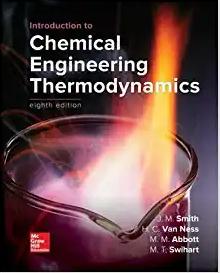Answered step by step
Verified Expert Solution
Question
1 Approved Answer
SOLUTION ( a ) Find the distance the block travels up the ramp. Apply conservation of mechanical energy. Substitute v i = v f =
SOLUTION
a Find the distance the block travels up the ramp.
Apply conservation of mechanical energy.
Substitute dsin and
Solve for the distance and insert the known values.
mgdsin
b Find the velocity at half the height, Note that dsin
Use energy conservation again.
Take and
Multiply by and solve for
Use the worked example above to help you solve this problem. A block rests on a horizontal, frictionless surface as shown in the figure. The block is pressed back against a spring having a constant of compressing the spring by to point A Then the block is released.
a Find the maximum distance the block travels up the frictionless incline if
C
Your response differs from the correct answer by more than Double check your calculations. m
b How fast is the block going when halfway to its maximum height?
EXERCISE
HINTS:
GETTING STARTED
IM STUCKI
A block is shot horizontally from a spring, as in the example above, and travels up a long a frictionless ramp before coming to rest and sliding back down. If the ramp makes an angle of with respect to the horizontal, and the spring originally was compressed by find the spring constant.
PRACTICE IT
Use the worked example above to help you solve this problem. A skier starts from rest at the top of a frictionless incline of height as shown in the figure. As the bottom of the incline, the skier encounters a horizontal surface where the coefficient of kinetic friction between skis and snow is
a Find the skier's speed at the bottom.
b How far does the skier travel on the horizontal surface before coming to rest?
EXERCISE
HINTS: GETTING STARTED
IM STUCK!
Use the values from PRACTICE IT to help you work this exercise. Find the horizontal distance the skier travels before coming to rest if the incline also has a coefficient of kinetic friction equal to The incline makes an angle with the horizontal,
Compute the distance traveled when there is no friction on the incline. When there is friction on the incline, do you expect the distance traveled to be larger or smaller than this?
SOLUTION
a Let at B Calculate the potential energy at A and at B and calculate the change in potential energy.
Find the potential energy at
at by choice. Find the
difference in potential energy between
A and B
b Repeat the problem if at A the new reference point, so that PE at A
Find noting that point is now at
c Repeat the problem, if two meters above B
Find
Step by Step Solution
There are 3 Steps involved in it
Step: 1

Get Instant Access to Expert-Tailored Solutions
See step-by-step solutions with expert insights and AI powered tools for academic success
Step: 2

Step: 3

Ace Your Homework with AI
Get the answers you need in no time with our AI-driven, step-by-step assistance
Get Started


